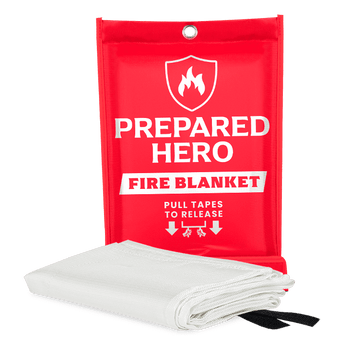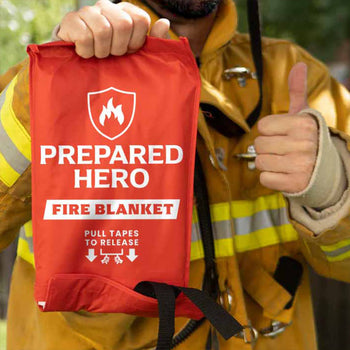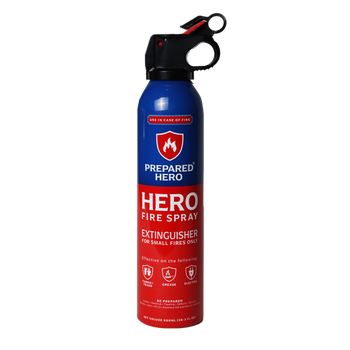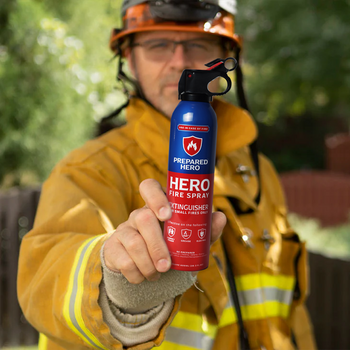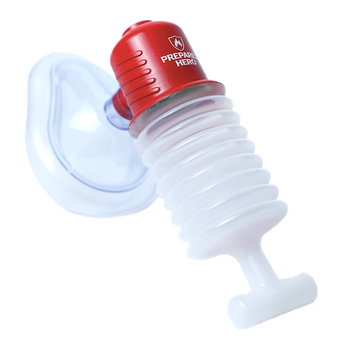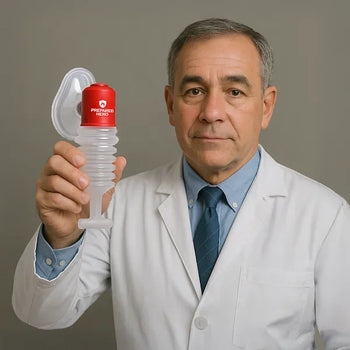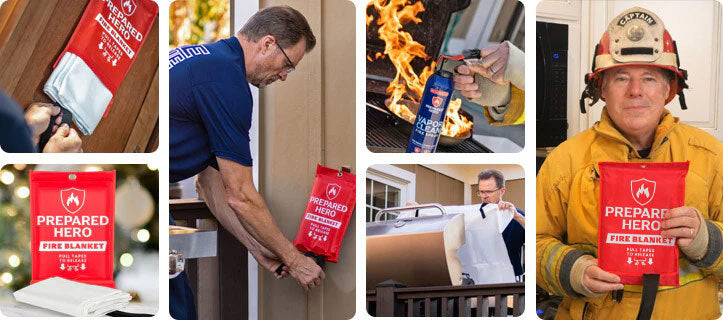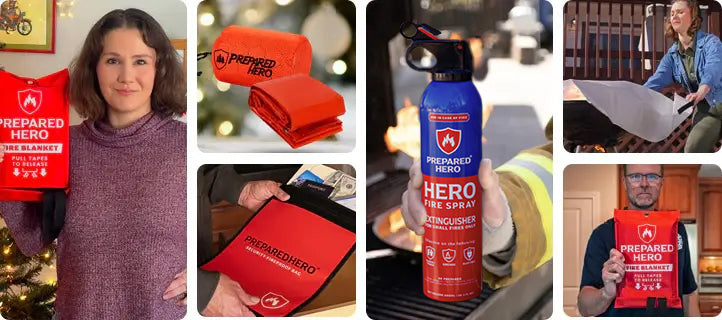Combustible materials are common, but many people don’t realize how dangerous they can be under certain conditions. While they need...
Smoke damage is sneaky because it doesn’t just leave behind stains. It seeps into walls, furniture, and even the air. Whether it’s from a big structure fire or just burnt food, smoke can do more harm than you might think.
From strange smells that won’t go away to serious damage you can’t always see, it’s important to know what smoke can do, how to spot the signs, and what steps to take. In this guide, we’ll discuss everything you need to know about smoke damage.
What Is Smoke Damage?

Smoke damage occurs when a fire fills a space with smoke. It leaves harmful residues like soot and strong odors behind, even if the flames never actually reach certain areas. It’s not the fire itself doing the harm, but the smoke that spreads through the air and seeps into everything. This can affect your walls, ceilings, furniture, clothes, and even the air you breathe.
Smoke damage also causes discoloration. You might notice yellowing on walls, dark stains, or cloudy marks on glass. It causes strange smells, too. The smoky odor sticks around and is tough to get rid of without deep cleaning and special odor removers. On top of that, smoke particles can corrode surfaces and weaken materials over time, especially if the smoke came from burning plastic or synthetic materials.
The type of fire matters as well. A slow, smoldering fire may cause different damage than a fast-burning blaze. Smoke can sneak into small cracks and vents, making fire damage cleanup a challenge. The longer you wait, the worse it gets, so act fast.
Soot is another problem. It clings to fabrics, electronics, and walls. It’s messy, toxic, and can cause permanent stains or structural wear if ignored.
How Bad Is Smoke Damage?

Smoke damage can be worse than it looks. It’s not just about stains on the walls or a lingering smell. Smoke carries tiny particles and chemicals that aren’t always visible but can be harmful. Substances like tar and carbon monoxide float through the air and settle on surfaces as soot. They can get into your lungs and cause breathing problems, especially for kids, seniors, or anyone with health issues.
Smoke also gets into walls, vents, furniture, and electronics. If you don’t clean it up quickly, the damage can stick around. It’s not just the smell. Smoke damage also messes with your health and home.Types of Smoke Damage
Not all smoke damage is the same. Different fires leave behind different types of residue, and each one brings its own cleanup challenges. Here are the main types of damage you might deal with:
1. Fuel Smoke
This comes from burning oil, gas, or other petroleum products. You’ll usually find it in attached garages, warehouses, sheds, and detached garages, but not so much in living rooms. Fuel smoke settles thick and heavy, and once it hits fabric, there’s no saving it. Cleaning it off hard surfaces is a serious chore, too.
2. Protein Smoke
Protein smoke is commonly produced by grease fires in the kitchen. They come from burned food or other organic matter. It doesn’t leave much visible mess, but it stains paint and smells awful. The strong odor can hang around for years if not handled properly.
3. Wet Smoke
Wet smoke is produced by low-heat, slow-burning fires, usually when plastic or rubber burns. It’s sticky, smells like burnt plastic, and leaves a thick black residue. It’s harder to clean than dry smoke and can corrode metal over time.
4. Dry Smoke
Dry smoke comes from fast-burning fires, like when wood or paper catches quickly (Class A fires). The residue is light and powdery. This sounds easy to clean, but it gets into tiny cracks and crevices. It can also cause deeper damage to wiring, foundations, and HVAC (Heating, Ventilation, and Air Conditioning) systems.
What Are the Symptoms of Smoke Damage?

Smoke exposure isn’t always obvious right away. However, your body usually gives you signs when something’s wrong. Here are some common symptoms of smoke inhalation you shouldn’t ignore, especially after a fire or heavy smoke event:
Persistent Cough
Smoke irritates your airways and causes them to produce more mucus. This leads to persistent coughing.
Shortness of Breath
You might find it hard to breathe normally because smoke lowers oxygen levels in your lungs.
Hoarseness or Noisy Breathing
If your voice sounds rough or your breathing sounds wheezy, your vocal cords or airways may be swollen or blocked.
Red or Irritated Eyes
Smoke can make your eyes burn, water, or turn red. In severe cases, it can burn your corneas.
Skin Color Changes
Your skin may turn pale, bluish, or cherry red. These are signs of low oxygen or carbon monoxide exposure.
Soot Around Nose or Mouth
Black marks around your nostrils or lips might mean you’ve inhaled soot and smoke deeply.
Facial Burns or Singed Nose Hair
Burned facial hair or skin is a big red flag for serious smoke inhalation.
Headache, Nausea, or Vomiting
Breathing in toxic gases like carbon monoxide can cause headaches, nausea, or vomiting.
Confusion or Fainting
Low oxygen caused by smoke inhalation can mess with your brain. This can lead to dizziness, seizures, or loss of consciousness.
Is It Safe to Stay In a House With Smoke Damage?
It is not safe to stay in a house with smoke damage, especially if it hasn’t been cleaned up properly. Even if the fire is out and things look okay on the surface, the air can still be filled with leftover smoke particles, tar, and carbon monoxide. Breathing those chemicals over time can cause serious health problems.
You might not notice it right away, but constant exposure can lead to headaches, breathing issues, or worse. Plus, soot and ash can settle into furniture, walls, and vents. This spreads those harmful particles around every time the air moves. So, it’s best to stay somewhere else until the fire damage restoration is done.
How Does Smoke Damage a Home?

Smoke damage isn’t just about bad smells or stains. It can quietly ruin your home in more ways than you’d think. Here’s a closer look at how smoke can cause lasting problems:
1. Discoloration and Stains
Smoke and soot can leave ugly stains on walls, ceilings, and furniture. Porous surfaces like drywall, wood, and fabric soak up smoke, which causes permanent discoloration. Even metal surfaces can turn dark or rusty from exposure.
2. Corrosion
Smoke carries acidic particles that can corrode pipes, wiring, and appliances. It also seeps into drywall, insulation, and wood, weakening them over time. Even roofs and gutters can break down from smoke damage.
3. Health Issues
The smell of smoke sticks around long after the fire’s out. Worse, the particles in smoke can carry toxic chemicals that cause breathing problems or other health issues. These particles settle in furniture, clothes, and the air.
4. Weakened Structure
Smoke doesn’t just stay on the surface. It can affect materials like wood and insulation. Corroded metal parts can also lead to serious structural problems down the line.
5. Lower Property Value
Homes with smoke damage are harder to sell and usually go for less. It’s because buyers don’t want to deal with the cost or health risks of leftover damage.
6. Mold Growth
Moisture mixes with smoke residue when firefighters put out flames with water. This creates the perfect setup for mold to grow.
7. Other Long-Term Issues
Smoke damage doesn’t just go away. The smell and health risks can stick around for years if not cleaned properly.
Common Items That May Be Damaged by Smoke

Smoke can damage way more than just walls and ceilings. Everyday items around your home can take a serious hit. Here’s a quick look at the most common items that could be damaged by smoke:
1. Carpets and Rugs
Synthetic carpets soak up smoke fast and may stain permanently within days. If they’re not damaged by heat or water, cleaning might work. However, it has to be done quickly, or the stains will stick for good.
2. Curtains and Upholstery
Fabrics tend to turn yellow after exposure to smoke. Standard vacuuming won’t help. In fact, it can spread the soot. It’s best to call the pros, because it calls for special tools and alkaline cleaners.
3. Furniture
Smoke can damage wood and metal furniture. Wood finishes, paint, and stains can get ruined during cleaning if the wrong products are used. Metal parts are also at risk of rust and corrosion.
4. Clothing
Soot clings to clothes and doesn’t always come out in a regular wash. If cleaned wrong, the smoke smell can set in permanently. Plus, leftover chemicals in the fabric can irritate your skin. It’s best to have them cleaned by professionals.
5. Appliances
Smoke can get inside your fridge, microwave, and other appliances. It can cause lasting odors and even damage the electrical parts. Residue from smoke is also corrosive and can shorten the lifespan of your devices.
6. Plastic Items
Plastic soaks up smoke fast and starts turning yellow within minutes. If you can, wipe plastic surfaces right away using an alkaline solution, but leave the rest for the experts.
7. Porcelain Fixtures
Sinks and tubs can get discolored within hours. A quick wipe and soap wash can help buy time, but the smoke can leave permanent marks if left alone.
How to Get Rid of Smoke Damage

Clearing out smoke damage isn’t as simple as opening a window. Smoke can settle deep into walls, furniture, fabrics, and appliances, so you need to clean it the right way. Here’s how to get started:
1. Ventilate and Check the Damage
Start by opening windows and doors to let fresh air in and push smoky air out. Use fans if you have them. Then, take a good look at how far the damage has spread. If things look bad, it’s smart to call in a professional to assess everything.
2. Remove Loose Soot and Clean Surfaces
Use a vacuum with a HEPA (High-Efficiency Particulate Air) filter to pick up loose soot from carpets, floors, furniture, and even walls. Be gentle because scrubbing too hard can make it worse.
Use a mix of warm water and dish soap for hard surfaces like floors or counters. Go with a dry chemical sponge, then apply polish for wood. Use a degreaser if the soot is oily or sticky. Then, steam or dry clean curtains, cushions, and clothes.
3. Get Rid of the Odor
Smoke smells linger. Sprinkle baking soda on carpets or fabric, let it sit, and vacuum it up to get rid of them. You can also place bowls of activated charcoal around the space to absorb smells. Wiping surfaces with a vinegar-water mix helps, too. If the smell still won’t go away, professional options like ozone treatment or thermal fogging can make a big difference.
4. Prevent Future Problems
Replace your smoke and carbon monoxide detectors if smoke or heat affected them. Don’t hesitate to call a restoration company if the damage is too much to handle alone. They’ve got the tools and know-how to deep clean and get your home back to normal.
What Causes Smoke Damage?

Smoke damage doesn’t always come from big house fires. Things like cooking, faulty wiring, or smoking indoors can cause it. Here are the most common sources you should watch out for:
1. Electrical Issues
Bad wiring, overloaded outlets, or broken appliances can start electrical fires. These often produce thick smoke that spreads quickly. Find out what electrical fires smell like here.
2. Cooking
Kitchen accidents like grease fires or leaving a stovetop unattended are a major cause of smoke damage. Remember, even small mishaps can fill your home with smoke.
3. Heating Equipment
Faulty space heaters, furnaces, or fireplaces can give off smoke and soot even if they don’t catch fire. Poor ventilation makes it worse.
4. Wildfires or Nearby Fires
Smoke from wildfires, fire tornadoes, or fires in nearby buildings can drift into your home and settle on surfaces, even if your house didn’t catch fire.
5. Smoking
Cigarette smoke might not seem like a big deal. But it can leave sticky, yellowish films on walls, ceilings, and furniture over time.
Each of these can leave behind lasting damage, so it’s important to know the signs and act fast if it happens. Having a fire blanket and fire spray nearby can stop small fires before they spread.
How Long Does Smoke Damage Last?

Smoke damage can stick around for a long time if it’s not cleaned up the right way. How long it lasts depends on how bad the damage is and how quickly you deal with it. Here’s a simple breakdown of what to expect:
Minor Smoke Damage
- How long it lasts: A few days to a couple of weeks
- What causes it: Small cooking or candle accidents
- What helps: Open the windows, wipe down surfaces, and use air purifiers. Most of the time, basic cleaning does the trick.
Moderate Smoke Damage
- How long it lasts: A few weeks to a couple of months
- What causes it: Smoke from a small indoor fire or something burning for too long
- What helps: You’ll probably need professional cleaners. Smoke damage may be in multiple rooms and harder to remove on your own.
Severe Smoke Damage
- How long it lasts: Several months to years, or permanently if ignored
- What causes it: Large fires that affect walls, ceilings, insulation, or HVAC systems
- What helps: Full restoration from professionals. This includes deep cleaning, deodorizing, and possibly fixing parts of the home structure.
Conclusion
Smoke damage can mess with your health, ruin your belongings, and destroy your home if not handled properly. Whether it’s a small kitchen fire or something bigger, acting fast makes a huge difference. Knowing what to look for, how to clean it, and when to call in help can save you time, money, and stress.
Do you want reliable, easy-to-use, and affordable tools to put out small fires before they spread? Check out Prepared Hero’s fire prevention tools here, and get up to 51% off on certain items. Stay prepared, hero!


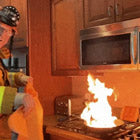 Fire
Fire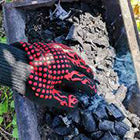 Safety
Safety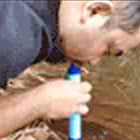 Survival
Survival Protection
Protection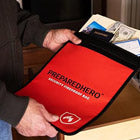 New
New
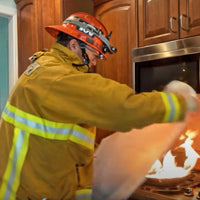 Fire
Fire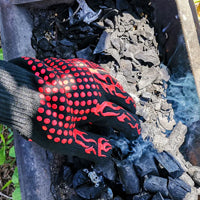 Safety
Safety Survival
Survival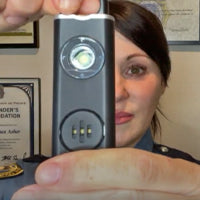 Protection
Protection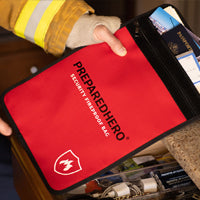 New
New